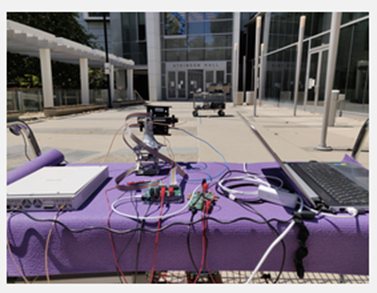Tap into the fastest version of 5G for home and workplace
There are tradeoffs with today’s 5G cellphones including impressive download speeds with extremely limited and spotty coverage, or widespread and reliable coverage with speeds that are akin to today’s 4G networks.
However, a new technology, developed by electrical engineers at the University of California San Diego combines the best of both worlds and could enable ultra-fast and reliable 5G connectivity simultaneously.
The technology presents a solution to overcome the fact that speedy wireless signals, known as millimeter waves, cannot travel far and are easily blocked by walls, people, trees and other obstacles. High band 5G systems communicate data by sending one laser-like millimeter wave beam between a base station and a receiver such as a user’s phone. If anything is in the way of that beam’s path, then the connection gets blocked completely.
Bharadia and his team from the UC San Diego Center for Wireless Communications, came up with a clever solution: split the one laser-like millimeter wave beam into multiple laser-like beams, and have each beam take a different path from the base station to the receiver.
Their system provided a high throughput connection (up to 800 Mbps) with 100% reliability, so that the signal didn’t drop or lose strength as the user moved around obstacles. In outdoor tests, the system provided connectivity up to 80 meters (262 feet) away.
The team developed a set of new algorithms. One first instructs the base station to split the beam into multiple paths. The algorithm then learns which are the best paths in the given environment and optimizes the angle, phase and power of each beam so that when they arrive at the receiver, they combine constructively to create a strong, high quality and high throughput signal. More beams result in a stronger signal.
The other algorithm maintains the connection when a user moves around and when another user steps in the way. The algorithm overcomes misalignment by continuously tracking the user’s movement and realigning all the beam parameters.
Original Release: Eureka Alert

